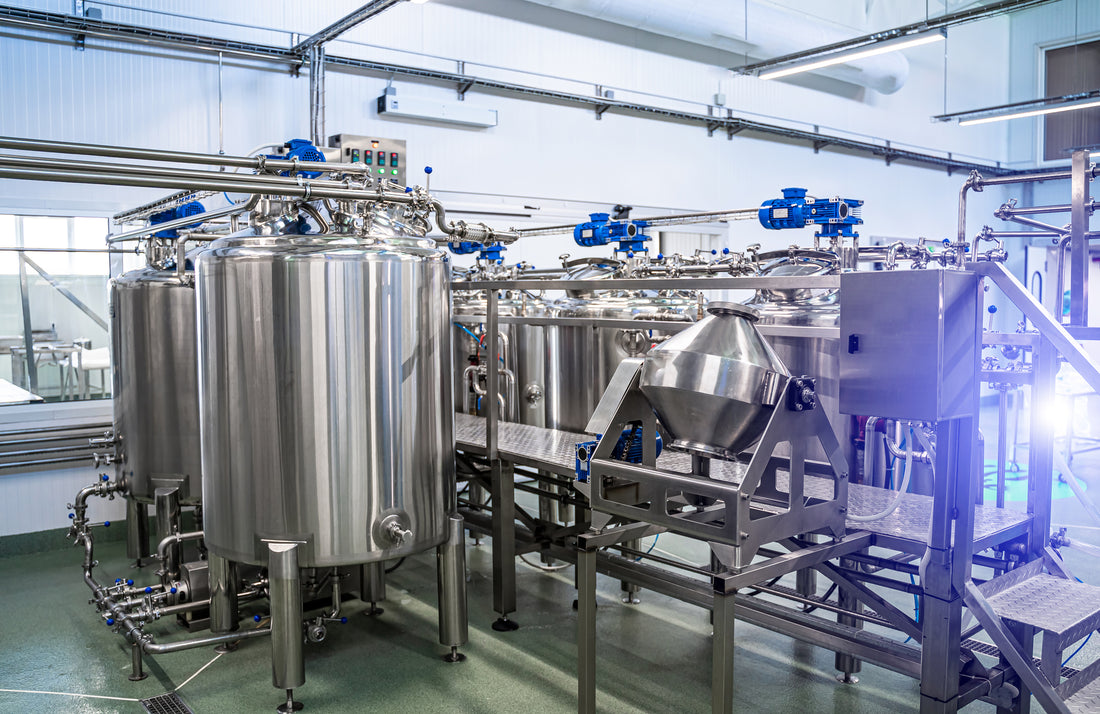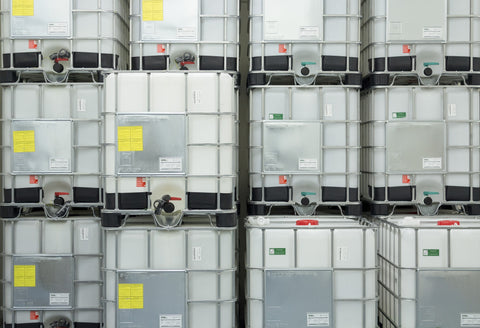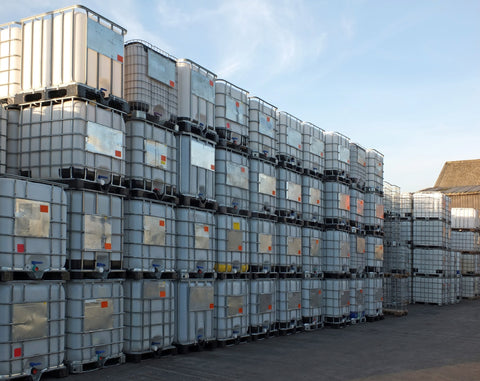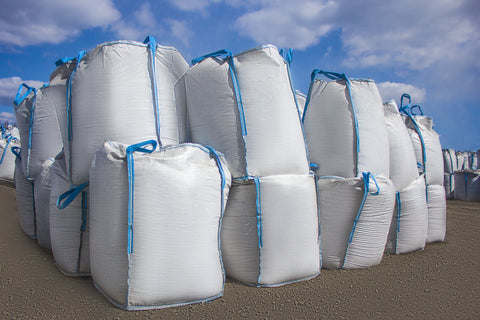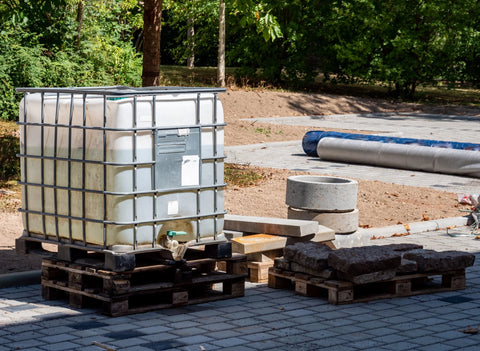The Foundation of Flavor: The Importance of Fermentation Temperature and Equipment
Fermentation is the heart of the brewing and winemaking process, where yeast works tirelessly to convert sugar into alcohol and carbon dioxide, infusing the liquid with distinctive flavors and aromas. This transformative process isn't just about the ingredients submerged in your fermentation vessel; it's significantly influenced by the fermentation temperature. Managing the temperature during fermentation is crucial, as it directly impacts the yeast strain's behavior, the development of flavors, and, ultimately, the quality of the beer or wine produced.
For both amateur home fermenters and seasoned brewers, mastering temperature control is a fundamental skill. The right fermentation equipment—ranging from simple thermometers to sophisticated cooling systems—plays a vital role in this endeavor. Ensuring the fermentation temperatures are maintained within the ideal range can mean the difference between a batch of delicious beer or wine bursting with intended flavors and a disappointing outcome that misses the mark.
In the following sections, we'll delve into the specifics of using IBC Totes for fermentation, explore the scientific principles behind fermentation temperatures, and introduce essential tools and innovative solutions for perfecting temperature during the process of fermentation. Whether you're fermenting a robust red wine or a crisp ale, understanding how to manage the fermentation temperature can elevate your brewing game, leading to consistently high-quality batches that are a joy to produce and savor.

Delving Into IBC Totes for Effective Fermentation Control

Intermediate Bulk Containers (IBCs) are an increasingly popular choice among brewers and winemakers for fermentation. These versatile totes offer ample space, durability, and the ease of temperature management, making them an excellent fermentation vessel for both small-scale home brewers and large-scale commercial operations. Their design facilitates consistent fermentation temperatures, which is crucial for developing the desired flavors and aromas in beer and wine. Ensuring that you use a food-grade tote is critical for maintaining a safe fermentation environment.
The capacity of IBC Totes to hold significant volumes of liquid, combined with their structural integrity, ensures that the fermentation process is not only efficient but also scalable. Whether for beer brewing or wine fermentation, IBC Totes allow for precise control over the fermentation environment, contributing to a stable and controlled fermentation process that is essential for producing high-quality alcoholic beverages.
The Science of Fermentation Temperatures
The activity of yeast strains during the fermentation process is highly sensitive to temperature. Each strain has an optimal temperature range that encourages healthy fermentation, influencing the speed of fermentation and the development of flavors. Too high fermentation temperatures can accelerate fermentation, leading to the production of unwanted flavors and higher alcohol content than desired. Conversely, temperatures that are too low may slow down or even stall the fermentation process, risking incomplete fermentation.
Secondary fermentation, a process often used in wine making and for certain beer styles to refine and enhance flavor profiles, also requires careful temperature management. The fermentation temperatures must be closely monitored and adjusted to ensure that the secondary fermentation contributes positively to the wine or beer's complexity without introducing off-flavors.
Understanding and controlling the desired fermentation temperature for each batch, considering the specific yeast strain and type of beverage being produced, is fundamental to achieving consistent and desirable results in brewing and winemaking.
Essential Tools and Techniques for Temperature Control
Achieving and maintaining the ideal fermentation temperature involves a combination of the right tools and techniques. Temperature control can range from simple, manual methods to advanced, automated systems designed for precision:
-
Manual Cooling Methods: Placing fermentation vessels in a cooler environment or using cold water baths are traditional methods. For IBC Totes, wrapping the container in wet towels and directing a fan towards it can help lower the temperature through evaporative cooling.
-
Heating Solutions: Heating belts, pads, or jackets can be attached to IBC Totes to maintain fermentation temperatures in cooler conditions. These devices gently warm the fermenting liquid to the desired temperature.
-
Automated Temperature Control Systems: Advanced systems involve the use of temperature controllers connected to cooling or heating mechanisms. These systems automatically adjust the temperature inside IBC Totes, ensuring it remains within the optimal range for fermentation.
Within the arsenal of essential tools for precise fermentation temperature control, heating solutions stand out, particularly for their versatility and efficacy in cooler environments. Heating wraps, which can easily wrap around IBC Totes or tanks, offer an invaluable resource for maintaining optimal fermentation temperatures. These flexible heating elements are designed to provide gentle, consistent heat, ensuring that the fermentation process proceeds smoothly, even in settings where ambient temperatures might otherwise slow or halt yeast activity.
The adaptability of heating wraps allows for their use with various sizes and shapes of fermentation vessels, making them a go-to choice for brewers and winemakers working in diverse setups. By precisely regulating the heat distribution around the vessel, these wraps prevent hotspots, ensuring that the entire batch ferments at a uniform temperature. This is particularly crucial during the cold months or in regions with significant temperature variations, where maintaining a steady, warm environment for fermentation can challenge even the most experienced fermenter. Integrating heating wraps into your temperature control toolkit can dramatically enhance the quality and consistency of your brewed or fermented products, guaranteeing that every batch meets the high standards of flavor and aroma you strive for.
Innovative Solutions for Maintaining Optimal Fermentation Temperature
Beyond conventional tools, innovative solutions have emerged for maintaining optimal fermentation temperatures, especially for fermenting in IBC Totes. DIY enthusiasts and professional brewers alike have devised creative ways to regulate temperature:
-
Immersion Coolers: Utilizing a coil that runs cold water or glycol solution, immersion coolers can efficiently manage the temperature of the liquid inside the IBC Tote without direct contact with the fermenting brew or wine.
-
Insulation Wraps: Insulating the exterior of IBC Totes can help maintain stable temperatures by reducing the impact of external temperature fluctuations.
-
Temperature-Controlled Chambers: Constructing or utilizing a temperature-controlled chamber or room where IBC Totes can be stored offers the most control, ideal for both fermenting and aging beer or wine.
What is the ideal temperature for fermentation?
Success in fermentation is as much about the art as it is about the science. Here are a few temperature tips to help you refine your brewing or winemaking process:
-
 Ales and Lagers: Ales typically ferment best between 60-72°F (15-22°C), while lagers prefer cooler ranges, around 45-55°F (7-13°C). Using IBC Totes, monitor and adjust the fermentation temperature according to the yeast strain's needs.
Ales and Lagers: Ales typically ferment best between 60-72°F (15-22°C), while lagers prefer cooler ranges, around 45-55°F (7-13°C). Using IBC Totes, monitor and adjust the fermentation temperature according to the yeast strain's needs.
-

Wine Fermentation: White wine fermentation temperatures are generally lower than those for red wine to preserve the delicate floral and fruity aromas. Reds can handle higher temperatures, which help extract color and tannin from the skin.
Fermentation FAQs
What equipment is used in fermentation?
The equipment used in fermentation typically includes fermentation vessels (like IBC Totes, plastic buckets, or glass carboys), airlocks, thermometers, heating wraps or belts for temperature control, and sometimes, cooling systems or refrigeration units to maintain optimal temperatures.
What is too high for fermentation temperature?
Temperatures above 78°F (25°C) are generally considered too high for most fermentation processes, as they can accelerate yeast activity excessively, leading to off-flavors and potentially killing the yeast.
What is too high for fermentation temperature?
Temperatures above 78°F (25°C) are generally considered too high for most fermentation processes, as they can accelerate yeast activity excessively, leading to off-flavors and potentially killing the yeast.
Elevating Your Fermentation Game
Mastering temperature control in fermentation is essential for anyone looking to produce high-quality beer or wine by understanding the science behind fermentation temperatures, utilizing the right tools and techniques, and exploring innovative solutions for temperature regulation, brewers, and winemakers.


